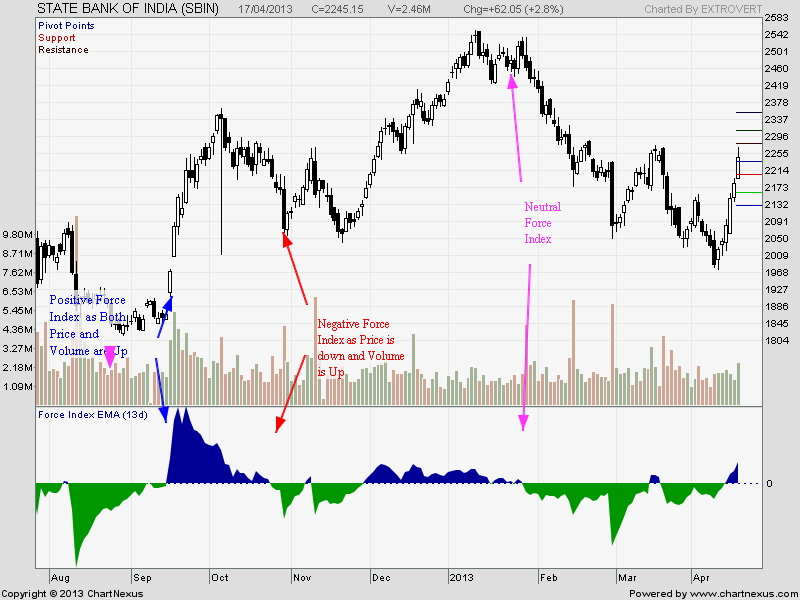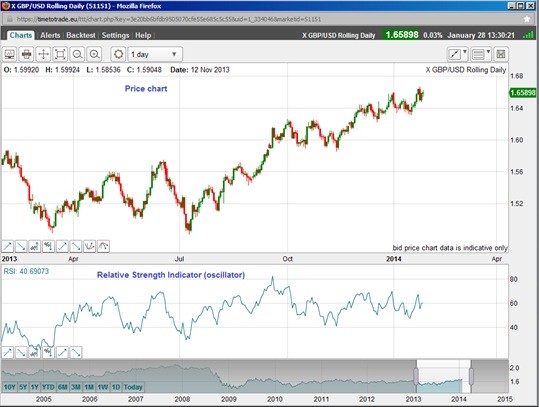Introduction to Technical Indicators
Post on: 1 Август, 2016 No Comment

Talking Points:
- Chart analysis tools are called Technical Indicators Technical Indicators are used for trend following, tracking price oscillation, measuring volatility, and finding support and resistance levels. Grouping indicators into these families accelerates the learning process.
The first time I opened a charting package and viewed all the available indicators, I felt completely overwhelmed. It looked like an endless list of terms written in a different language. Attempting to learn what all of them did seemed like a near impossible task, but over time, I did learn how many indicators can be helpful with my trading.
The most enlightening part of my journey was realizing that many indicators are VERY similar to each other, and understanding major indicator families went a long way in figuring out what they all mean. So in todays lesson, we will break down the different groups of indicators and describe how they work.
Note: To test out these indicators on real-time Forex charts for free, open an FXCM Demo account.
Trend Following
Trend following indicators were created to help traders trade currency pairs that are trending up or trending down. We have all heard the phrase the trend is your friend. These indicators can help point out the direction of the trend and can tell us if a trend actually exists.
Moving Averages
A Moving Average (MA for short) is a technical tool that averages a currency pairs price over a period of time. The smoothing effect this has on the chart helps give a clearer indication on what direction the pair is moving either up, down, or sideways. There are a variety of moving averages to choose from. Simple Moving Averages and Exponential Moving Averages are by far the most popular.
Ichimoku
Ichimoku is a complicated looking trend assistant that turns out to be much simpler than it initially appears. This Japanese indicator was created to be a standalone indicator that shows current trends, displays support/resistance levels, and indicates when a trend has likely reversed. Ichimoku roughly translates to one glance since it is meant to be a quick way to see how price is behaving on a chart. Check out our Definitive Guide to Trading Trends with Ichimoku Cloud.
ADX
The Average Direction Index takes a different method when it comes to analyzing trends. It wont tell you whether price is trending up or down, but it will tell you if price is trending or is ranging. This makes it the perfect filter for either a range or trend strategy by making sure you are trading based on current market conditions. Here is an example of How to Use ADX to Identify Forex Trend.
Oscillators
Oscillators give traders an idea of how momentum is developing on a specific currency pair. When price treks higher, oscillators will move higher. When price drops lower, oscillators will move lower. Whenever oscillators reach an extreme level, it might be time to look for price to turn back around to the mean. However, just because an oscillator reaches Overbought or Oversold levels doesnt mean we should try to call a top or a bottom. Oscillators can stay at extreme levels for a long time, so we need to wait for a valid sign before trading.
RSI
The Relative Strength Index is arguably the most popular oscillator out there. A big component of its formula is the ratio between the average gain and average loss over the last 14 periods. The RSI is bound between 0 100 and is considered overbought above 70 and oversold when below 30. Traders generally look to sell when 70 is crossed from above and look to buy when 30 is crossed from below. Click here to learn about A Better Way to Use RSI to Signal When to Take a Forex Trade.
Stochastic s
Stochastics offer traders a different approach to calculate price oscillations by tracking how far the current price is from the lowest low of the last X number of periods. This distance is then divided by the difference between the high and low price during the same number of periods. The line created, %K, is then used to create a moving average, %D, that is placed directly on top of the %K. The result is two lines moving between 0-100 with overbought and oversold levels at 80 and 20. Traders can wait for the two lines to crosses while in overbought or oversold territories or they can look for divergence between the stochastic and the actual price before placing a trade.
CCI
The Commodity Channel Index is different than many oscillators in that there is no limit to how high or how low it can go. It uses 0 as a centerline with overbought and oversold levels starting at +100 and -100. Traders look to sell breaks below +100 and buy breaks above -100. To see some real examples of the CCI in action, take a look at how to Trade Forex w ith the CCI Indicator.
MACD
The Moving Average Convergence/Divergence tracks the difference between two EMA lines, the 12 EMA and 26 EMA. The difference between the two EMAs is then drawn on a sub-chart (called the MACD line) with a 9 EMA drawn directly on top of it (called the Signal line). Traders then look to buy when the MACD line crosses above the signal line and look to sell when the MACD line crosses below the signal line as seen here. There are also opportunities to trade divergence between the MACD and price.
Volatility

Volatility measures how large the upswings and downswings are for a particular currency pair. When a currencys price fluctuates wildly up and down it is said to have high volatility. Whereas a currency pair that does not fluctuate as much is said to have low volatility. Its important to note how volatile a currency pair is before opening a trade, so we can take that into consideration with picking our trade size and stop and limit levels.
Bollinger Bands
Bollinger Bands print 3 lines directly on top of the price chart. The middle band is a 20-period simple moving average with an upper and low band that are drawn 2 standard deviations above and below the 20 MA. This means the more volatile the pair is, the wider the outer bands will become, giving the Bollinger Bands the ability to be used universally across currency pairs no matter how they behave. The wider the bands, the more volatile the pair. Most common uses for Bollinger Bands are trying to trade double tops/bottoms that hit an upper or lower band or looking to trade bounces off an outer band in the direction of the overall trend.
Bollinger Bands is a registered trademark of John Bollinger.
ATR
The Average True Range tells us the average distance between the high and low price over the last X number of bars (typically 14). This indicator is presented in pips where the higher the ATR gets, the more volatile the pair, and vice versa. This makes it a perfect tool to measure volatility and also can be a huge help when selecting where we should set our stop losses.
Support/Resistance
Pivot Points
Being one of the older technical indicators, Pivot Points are one of the most widely used in all markets including equities, commodities, and Forex. They are created using a formula composed of high, low and close prices for the previous period. There is a central pivot line and subsequent support lines and resistance lines surrounding it. Traders use these lines as potential support and resistance levels, levels that price might have a difficult time breaking through. For more information on strategies relating to pivot points, click here.
Donchian Channels
Price channels or Donchian Channels are lines above and below recent price action that show the high and low prices over an extended period of time These lines can then act as support or resistance if price comes into contact with them again. A common use for Donchian channels is trading a break of a line in the direction of the overall trend. This strategy was made famous by Richard Dennis Turtle Traders where Dennis took everyday people and was able to successfully teach them how to trade futures based on price channels. Donchian channels can be added to your Marketscope indicator list by clicking here. For a deeper look at using this tool successfully, read Breakout Trades and the Power of Price Channels.
Good trading!
—Written by Rob Pasche
Sign up for my email list to stay up to date with my latest articles and videos.














